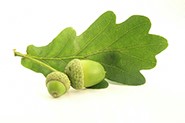In HMRC v The Executors of Lord Howard of Henderskelfe [2014] EWCA 278, the Court of Appeal has confirmed that a valuable painting was plant and therefore a wasting asset so that its sale proceeds were exempt from Capital Gains Tax. This might also be an important result for capital allowances. Note changes from April 2015.
Lord Howard had lent the painting by informal agreement to his company which displayed it in Castle Howard for many years. It was later sold for £9 million by his executors who claimed CGT exemption.
The court found that the painting was properly described as 'plant' and so they determined it to be plant for the purposes of Capital Gains Tax (CGT) legislation. The fact that it was not used in any trade by its owner did not affect its description. In contrast, for expenditure to be plant for capital allowances purposes it must be for the purposes of a trade.
Wasting assets for CGT
- Section 44 of the Taxation of Chargeable Gains Act (TCGA) 1992 provides an exemption from Capital Gains Tax for wasting assets. A wasting asset is defined as an asset with a predictable life of fewer than 50 years.
- S.44(c) says that plant and machinery is a wasting asset as it provides that plant and machinery, in every case shall be regarded as having a predictable life of fewer than 50 years. The actual lifespan of plant (in the Henerskelfe case the painting was 200 years old) is ignored because of this.
- In s.45(2) the exemption is withdrawn if a wasting asset is used for the purposes of a trade and capital allowances were or could have been claimed on it. In Lord Howard's case, no capital allowances could have been claimed on it because it was not used for the purposes of a business
So are paintings plant for capital allowances?
HMRC accept that paintings may qualify as plant for capital allowances if they are used to create a desirable setting or ambience in which to carry on a trade, for example in a hotel or restaurant. However, HMRC does not agree that a painting hanging in an accountant's office can be plant "because selling atmosphere is not part of an accountant's business". (see HMRC Capital Allowances Manual CA21130).
In the light of the Lord Howard decision, it seems that the matter of whether a painting can also be plant for capital allowances purposes is more clear cut: paintings can be plant for CGT, so in that case, it would be quite odd if they could not be plant for capital allowances if purchased for use in a business.
An alternative common-sense approach may be as follows:
1. Many people would probably regard a highly valuable painting as an investment asset and not plant as such, even when owned by a business and on display at its premises. It would depend on the use given because if it was purchased to attract customers it seems it might be plant after all.
2. A less valuable asset which is used for decorative purposes in the business, say on the accountant's wall, or meeting room would tend to be assumed (taking a common-sense view) to be part of working plant and machinery of his business, and so it would seem that it would be sensible to claim capital allowances despite what HMRC's manual says.
3. Any painting worth less than £6,000 will always tend to be regarded as a chattel for CGT by HMRC and so exempt from CGT. Chattels are tangible moveable property and are very likely if used in a business to be plant for capital allowances purposes too.
All change from 1 April (companies) and 6 April (individuals) 2015
S.45 was amended by the Finance Act 2015 to make clear that the wasting asset exemption applies only if the person selling the asset has used it as plant in their own business.
External links
HMRC v The Executors of Lord Howard of Henderskelfe [2014] EWCA 278
Thousands of accountants and advisers and their clients use www.rossmartin.co.uk as their primary TAX resource.
Register with us now to receive our receive our FREE SME Topical Tax Update & newletter.


